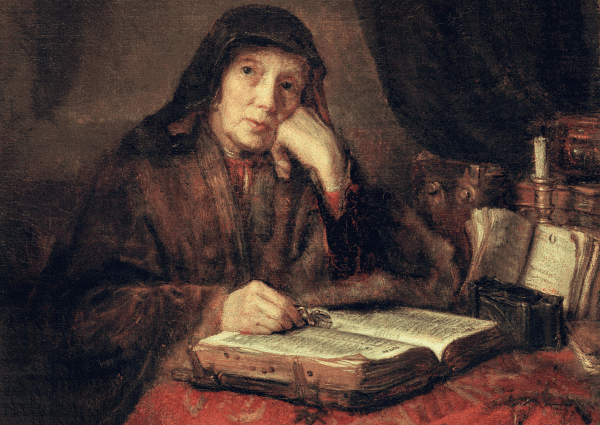Early modern Bible readers were critical and created their own ideal Bible
Publishers of sixteenth-century Bibles added elements to them that connected to an active and diverse readership, such as summaries, maps, and reading plans. In this way, they made the Bible attractive and accessible. In turn, readers made much use of these elements and also enhanced their own Bibles with personal components. In addition, they were critical and creative: they corrected the text or added fragments or images. By doing so, they created the ideal book for themselves. These are the findings of research conducted by Renske Annelize Hoff. Her research breaks various preconceptions about historical reading (including Bible reading) and early modern religion.
What happens when people open a book and start to read? How do readers move through the text? How do they respond to images? And how do they deal with the book as a material object? What does this look like when readers regard this book as the word of God? These questions are central to the dissertation Involving Readers: Practices of Reading, Use, and Interaction in Early Modern Dutch Bibles (1522-1546) by Renske Annelize Hoff. Hoff studied the use of sixteenth-century Dutch Bibles.
In her dissertation, Hoff starts by discussing the choices made by the printers and publishers of these Bibles. From her research, it appears that sixteenth-century printer-publishers added elements to their Bibles that connected to an active and diverse readership. By adding components like reading plans, summaries, almanacs, or maps to the Bible text, they made the Bibles suitable and attractive to read as study material as well as for applications in prayer or to prepare for Church service.

The users of these Bibles subsequently made eager use of these resources. In addition, they often enhanced their own books with personal elements, such as annotations about their family history, additional maps, or extra texts. These traces offer a glimpse into the diversity of the readership—from priests and countesses to tailors and tradesmen, and both in Protestant and Catholic circles—and illustrate that these Bibles were often read for decades or even centuries after they were printed.
Early modern Bible readers also appear to have been critical and creative: they regularly corrected the text, or added fragments or images to it. By doing so, they created the ideal book for themselves. We therefore see that the book was not static but was a textual, visual, and material object that could move with the interests and wishes of readers, over decades and centuries.
Hoff shows how the religious experience was practically given shape in the possession, reading, and personalization of the Bible, in a period characterized by religious dynamics. She offers insight into the history of reading and the possession of books, particularly religious ones. The research breaks various preconceptions about historical Bible reading and early modern religion. For instance, the persistent idea that only men could read, that Catholics didn’t read the Bible in Dutch, that worshippers did not think critically, or even that there were no Dutch Bibles before the Statenvertaling (‘first’ Dutch Bible translation). In addition, the research provides insight into topics that still play a role in our modern book usage: how we often see books as special objects that you cannot simply throw away; how features such as the book cover or the presence of images can attract certain readers; and why we like to write our names in the front of our books.
More news
-
18 November 2025
What about the wife beater? How language reinforces harmful ideas
-
03 November 2025
Menopause in perspective: How the media influences our perception
-
23 October 2025
Nine UG researchers awarded Vidi grant
